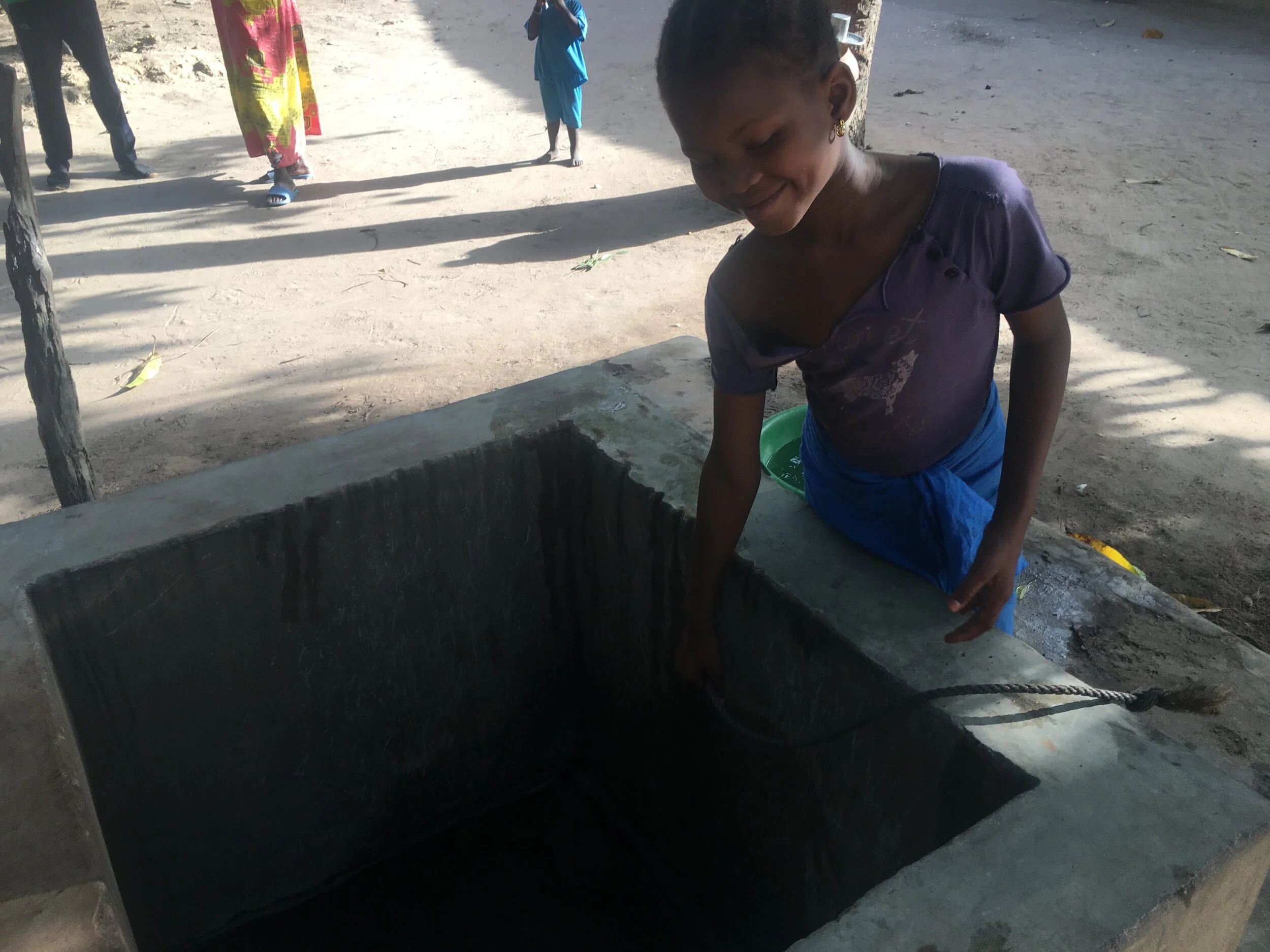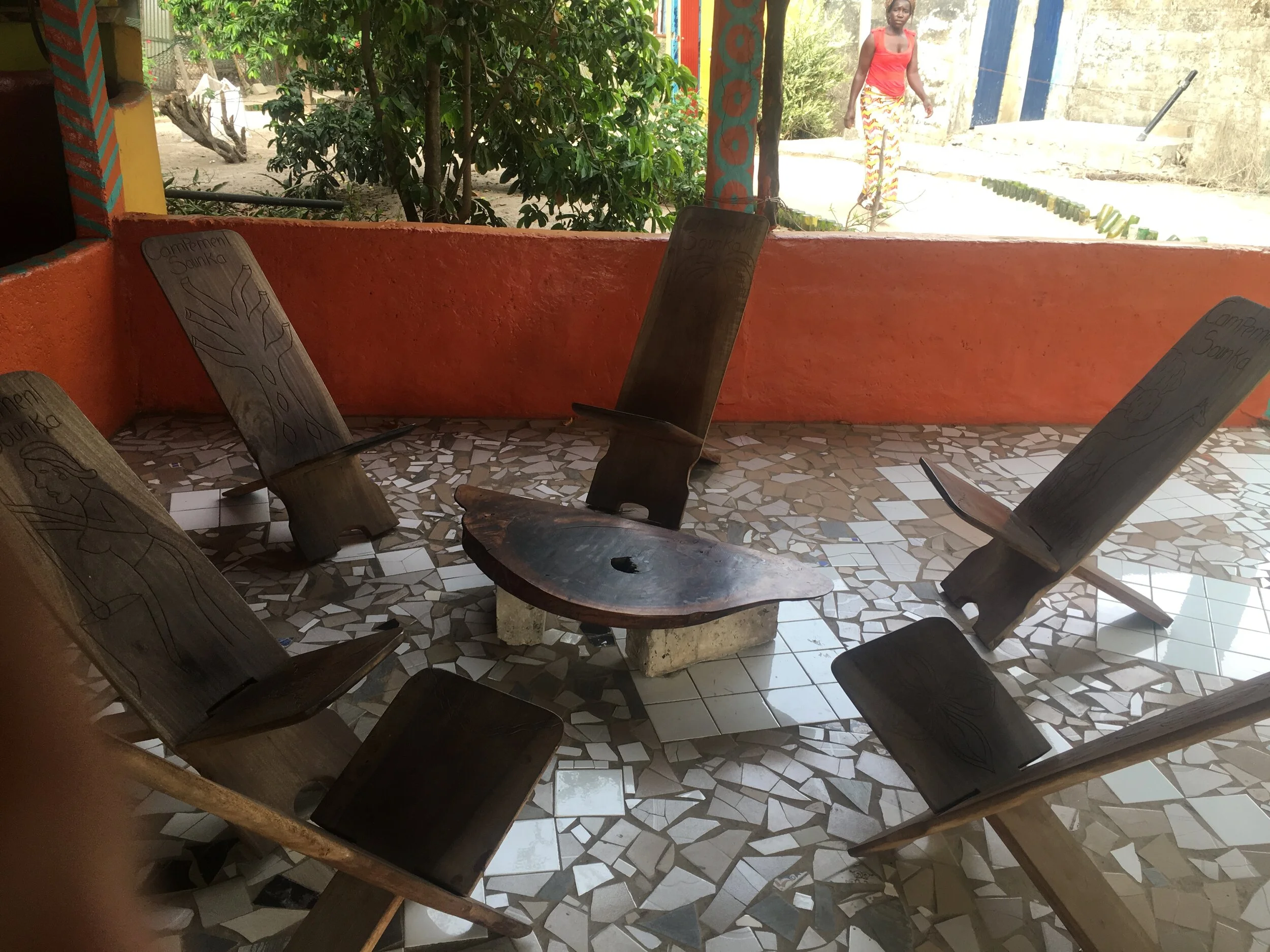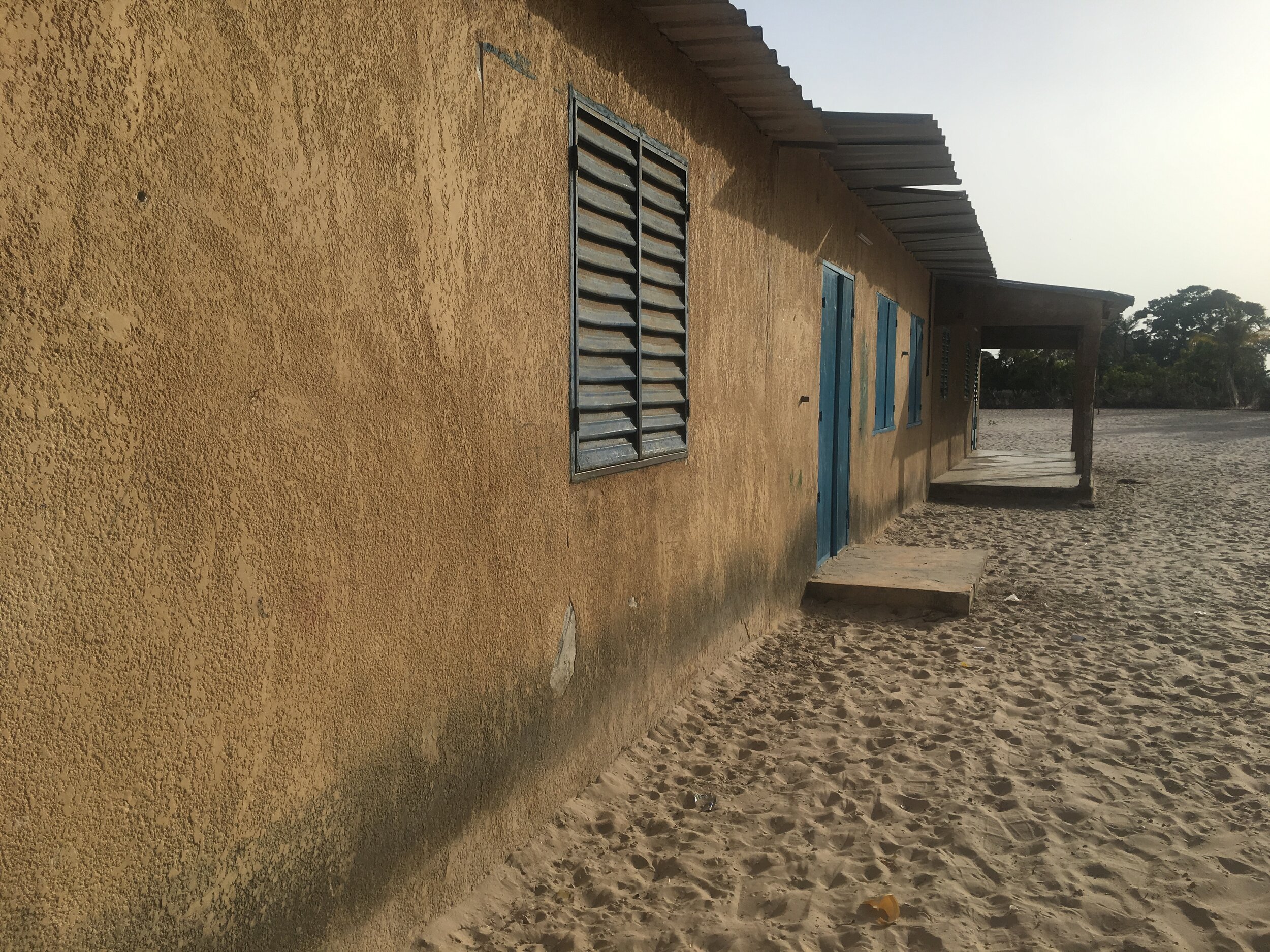The Other Senegal
Paco came to pick us up at 8:30 but Chris was doing some work and we didn’t get on the road until after 9. Today’s driver picked us up with a bush taxi, a beat up station wagon with three rows of seats and room for 8. I’m in the back seat by myself. It’s not comfortable. The inside of the car is rusting to the point where I can see the smooth pavement flying by in a hole between my feet. I wonder if the back end of the car will break off and what would happen to me. I don’t like the thought and focus on the dried up rice paddies we’re passing. It’s the end of the dry season and everything is dead. It’s dusty and smells like diesel fuel. I cover my mouth and nose with my bandana.
Me with my bandana.
We drive an hour and a half back toward the Atlantic from Zigunichor and stop at a village with a two-story house made of packed dirt and sand. The house was completed around 1950. The builder was inspired by his time in WWII fighting for the French. He saw two story houses with staircases instead of a ladder and two balconies for air. He wanted to bring that grandeur and comfort back to Casamance. The house was built between October and June, in the dry season. Every two weeks the builder added on to the pillars and walls with a sandy cement mixture 2-3 feet at a time with ample days to dry in between.
The current woman of the house wasn’t home so a man from the neighboring museum shows us around. The grandmother died two years ago and the grandfather died 20 years ago. The house has 2 granaries for storing rice, one for the men and one for the women. The men’s side has been empty a long time. The women’s granary is musty and dark. I cover my face with my bandana again as the museum man tells us about rotating the rice crop and eating the older grains first.
Eight children aged 6 months to about 12 or so are home alone as were poke around the house and hear about the construction. We’ve seen plenty of 6-10 year olds in charge of their younger siblings. I asked Paco who was taking care of his 11 year old daughter while he was with us as he said he’s not married. He looked very confused and told me she was grown. I said I thought she was 11. He said she was. We have such different ideas about the roles of children.
The inside of the bush taxi.
Paco has worked for the past year for a French-backed NGO called CAP. There are two other guides, none of whom really speak English. Paco has some words and phrases but we all rely on Megan as the intermediary. Paco refers to “the two Senegals.” He is Muslim and lives in Zigunichor. He tells us that Casamance used to be it’s own region and that at one point it was a Portuguese colony before Portual traded it to the French in some deal involving territory in the Caribbean in the late 1800s. In 1982 there was a big rebellion where the people of Casamance tried to break free from Dakar, which they thought didn’t properly represent them. They did not succeed and instead got soldiers from the north running check points throughout the region that exist to this day.
The bush taxi had seen better days but we survived unscathed.
Casamance is more Christian than the north. We see sows and piglets roaming around. It’s a poor region, much poorer than the area near the capital and for a long time it was cut off from the north by The Gambia. Today there’s a bridge and driving, flying or taking the ferry are all travel options, though we only met one person from Casamance who had traveled out of the region.
Paco and Megan stand outside the two-story earth house in Casamance.







